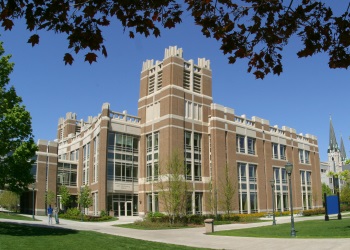Saving Your Work
The library staff, first and foremost, wants to minimize the chance of students losing their work and wasting their time. The steps in the "Saving Your Work" section below are "best practices" to reduce chances of losing work/data.
General Information
- All saved work at the library PCs is saved by default to a designated 'My Documents' folder on that PC. This location is designed as convenient, temporary short-term storage location for student work.
- It is highly recommended that students either copy work from 'My Documents' to their own storage device (flash drive, etc.), email file(s) to themselves via eMarq or other mail program, or store files in their D2L Locker for backup purposes. Students can then delete the copy of their files from 'My Documents' at their discretion.
- The library does not guarantee the availability or accuracy of any files stored in 'My Documents'. The library also reserves the right to delete any or all files should hardware or software failures require such action.
- The library re-images the public computers during the semester. Although an effort is made to retain several days of files stored in 'My Documents', the purpose of the re-image is to completely purge the PC of all files and start over. This generally is scheduled over breaks, but may be required at any time during the semester due to emergencies or equipment failure.
Saving Your Work
- Make sure you have your own storage options - flash drive, floppy, email attachment, D2L Locker.
- When you start a new paper or project, save it immediately. This enables the automatic backup in Word and other programs to function efficiently. Waiting until you're done increases the chance of loss.
- MS Office allows assigning a password to a file (Office Button/Prepare/Encrypt Document), so you can prevent others from accessing it, but you need to remember the password - no one can help you if you forget.
- As you're working, save often to minimize the chance of losing work. When finished, copy the file to your own storage device, the D2L Locker, or attach via email.
- If using a flash drive, wait until the file(s) finish writing - don't just remove the drive and run - you can easily corrupt the entire device.
- Delete your file(s) from 'My Documents' if desired, after confirming that your copy is good.






